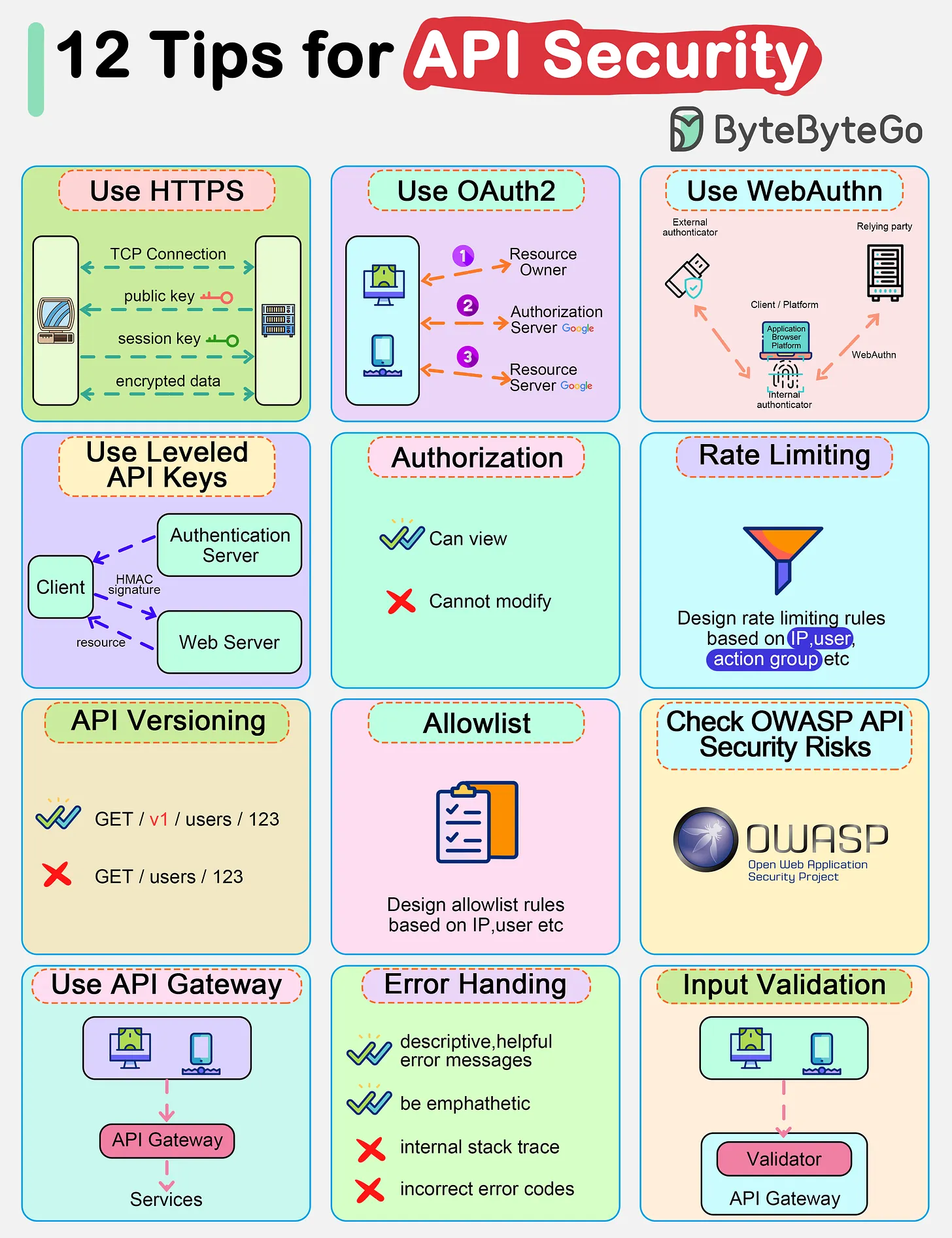API Security
API Security
API Security
- API security involves implementing measures to protect your APIs from threats and attacks. Here are some common security implementations for APIs:
Authentication:- This verifies the identity of the users interacting with your API. Common methods include API keys, OAuth, or JWT (JSON Web Tokens).
Authorization:- This controls what authenticated users can do. This is typically handled by setting permissions and roles for each user.
Rate Limiting:- This prevents abuse by limiting how many requests a user can make in a certain time period.
Input Validation:- This ensures only valid and expected data is processed by your API. This can help prevent attacks like SQL injection and cross-site scripting (XSS).
Encryption:- This protects data in transit between the client and your API. This is typically done using HTTPS/SSL.
Error Handling:- This prevents sensitive information from being revealed in error messages.
Logging and Monitoring:- This helps detect and respond to security incidents quickly.
Security Headers:- These can add an extra layer of security by instructing the client’s browser on how to behave when handling your API’s data.
Regular Security Testing:- This includes penetration testing and vulnerability scanning to find and fix security weaknesses.
Token Management:- Tokens are used in API security to authenticate and authorize users.
- When a user logs in, the server generates a token that the client stores and includes in all subsequent API requests.
- The server checks this token to verify the user’s identity and permissions.
- Token management involves securely generating, storing, and invalidating these tokens.
- It’s important to ensure tokens are securely stored (not in plain text), have an expiration time to limit the damage if they’re compromised, and are invalidated when a user logs out or changes their password.
Cross-Origin Resource Sharing (CORS):- CORS is a mechanism that allows many resources (e.g., fonts, JavaScript, etc.) on a web page to be requested from another domain outside the domain from which the resource originated.
- It’s a useful security feature, but it can be tricky to get right.
- If not properly configured, it can either block legitimate requests or allow malicious ones.
- You need to configure your API server to respond with the appropriate CORS headers to allow requests from trusted domains and to specify which HTTP methods are allowed.
- It’s important to be as specific as possible in your CORS configuration to minimize potential security risks.
This post is licensed under CC BY 4.0 by the author.
